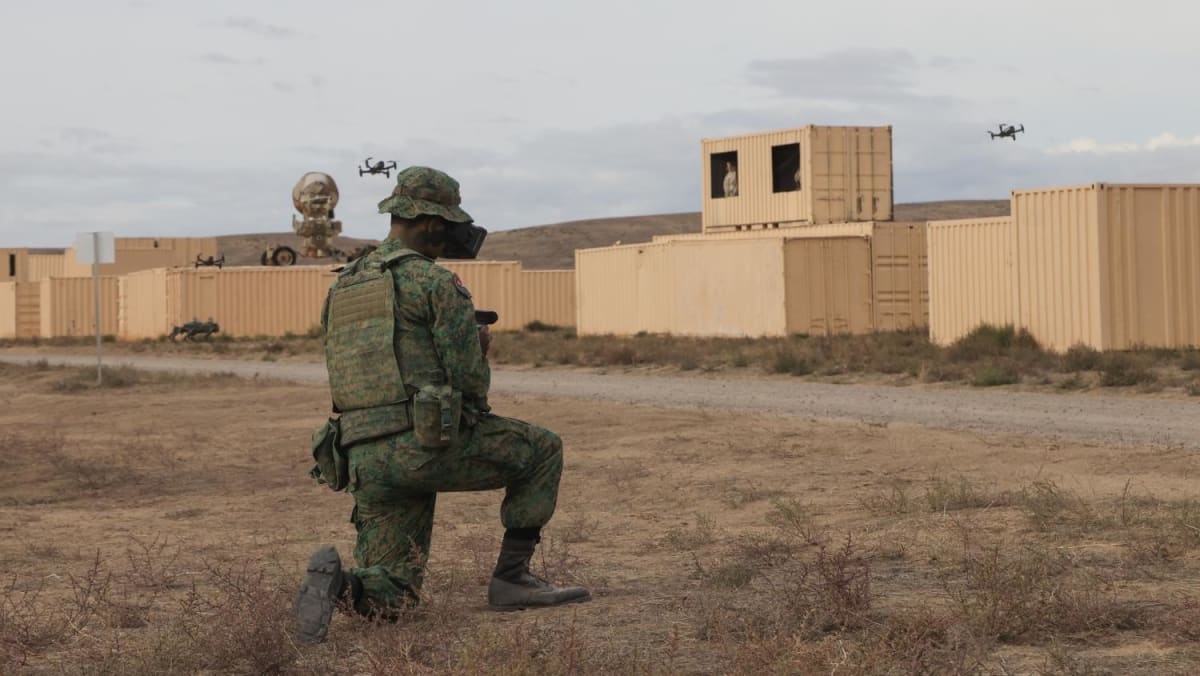
Chen Chuanren
RAPID DECISIONS, RAPID STRIKES
Beyond drones and hardware, key developments are also made in the command-and-control systems, now powered by artificial intelligence (AI).
At XFS, the improved Command-and-Control Information System is also stress tested at the battle staff level, aimed to reduce the command post’s cognitive load and shorten decision making time.
In modern warfare, the process of sense and strike, sometimes referred to as the “kill chain”, is now reduced to minutes or even seconds as the battlefield evolves into a dynamic environment.
An increasingly urbanised battlefield means that these targets may hide in or around buildings to evade the watchful eyes of high-flying unmanned aerial vehicles, sometimes positioning themselves near sensitive structures like schools, hospitals, and religious sites.
At the command post, computer vision technology quickly detects and classifies targets from the drone sensors, automatically plotting them into the Command-and-Control Information System.
The system processes these massive volumes of data and information, recommending the most suitable assets in the area to engage the target, yet minimising collateral damage with new predictive tools.
With a click, the “strike order” is digitally transmitted to the asset, akin to a computer game of “Command and Conquer”.
To enhance stealth and surprise, these orders are transmitted via encrypted datalink.
Datalink is like a flying internet for airborne assets to share important information such as targets and coordinates, and allowing missions to be conducted without the need for radio communication.
Datalink is displayed as images on the cockpit console, providing pilots with enhanced situational awareness as part of an integrated warfighting system.
This capability is further bolstered by the introduction of RSAF’s newly upgraded F-16 fighter jets equipped with Link-16 datalink, state-of-the-art active electronically scanned array radar, and new Global Positioning System and laser-guided Joint Direct Attack Munition capability, granting the F-16s unprecedented ground attack capabilities not seen since their delivery in 1998.
Now, with similar capabilities in the F-15SG fighter jets, SAF commanders have the flexibility to assign either fighter type for precision strikes using either the Joint Direct Attack Munition or laser-guided bombs.
THINK BIGGER
Successful trials in XFS will provide RSAF and DSTA engineers with greater confidence to further push the limits of the testing and adoption of tactical unmanned systems. After all, the complexity of XFS has continued to increase over the years.
These could include scaling up the size of the drone swarm from just a few to tens or even hundreds. Pushing the boundaries further, it could involve pairing different types of unmanned platforms or even manned and unmanned combinations between manned aircraft and drones.
Moreover, the development of network-centric warfare observed at XFS is also in preparation for the introduction of RSAF F-35B fighter jets in 2026.
Renowned for its advanced sensing and data capabilities, the lessons learned and technological advancements at XFS will enable the SAF to rapidly integrate the F-35 and fully harness its capabilities.
The Ukraine war underscores the vital role of rapid and agile adoption of technology in modern warfare.
A small armed force like Singapore’s needs to continually leverage novel technologies such as autonomous systems and AI to complement its proven warfighting platforms, like the F-15SG and High Mobility Artillery Rocket System, and utilise technology to fight intelligently, save lives, and maintain a strategic edge over its potential foes.
ABOUT THE AUTHOR:
Chen Chuanren is a freelance defence journalist and contributes to publications like Aviation Week and Shephard Media. He witnessed Exercise Forging Sabre in person in 2015, 2017 and 2023.